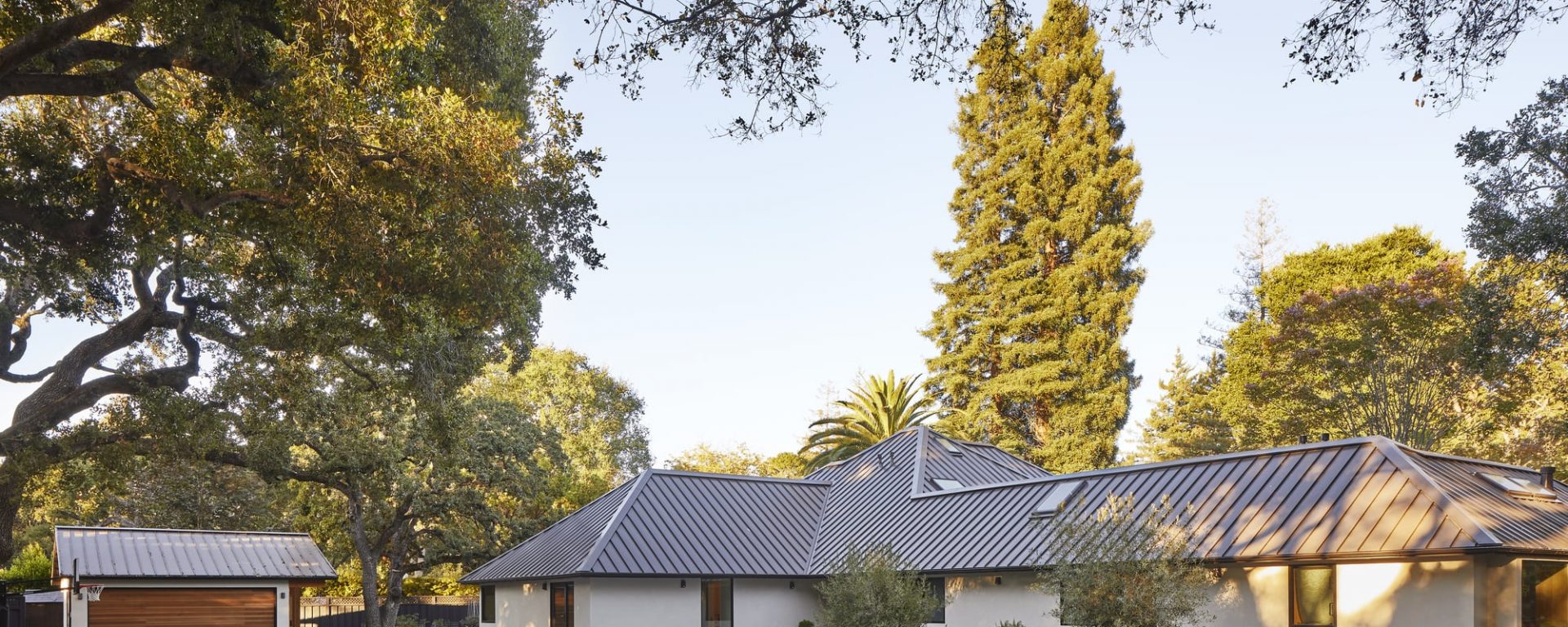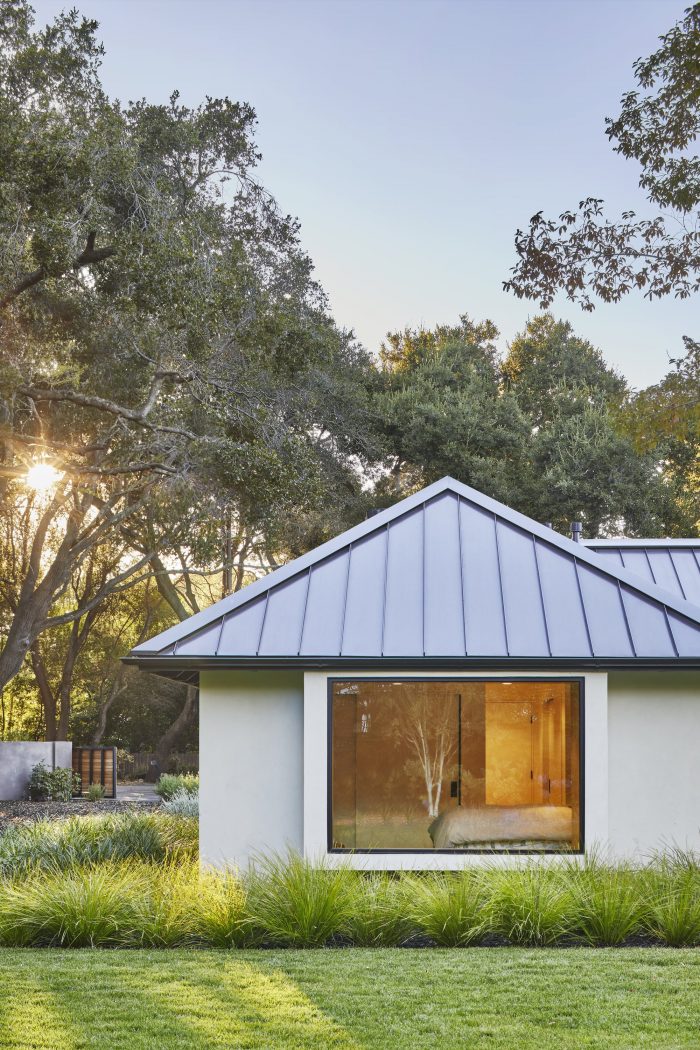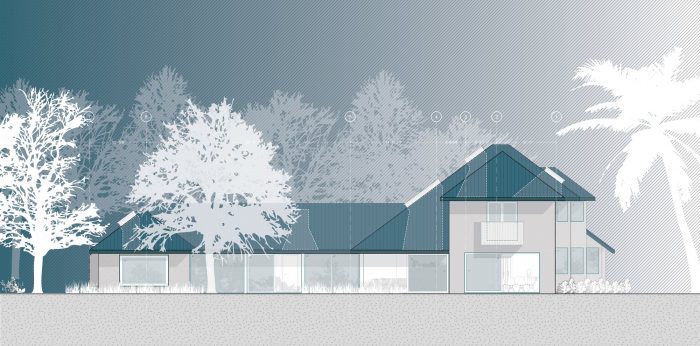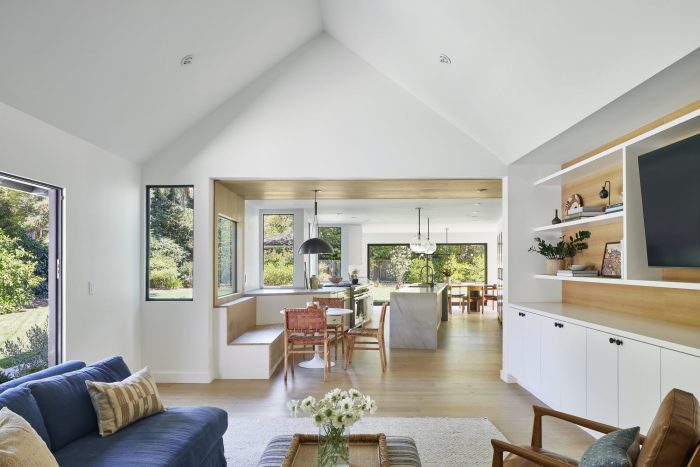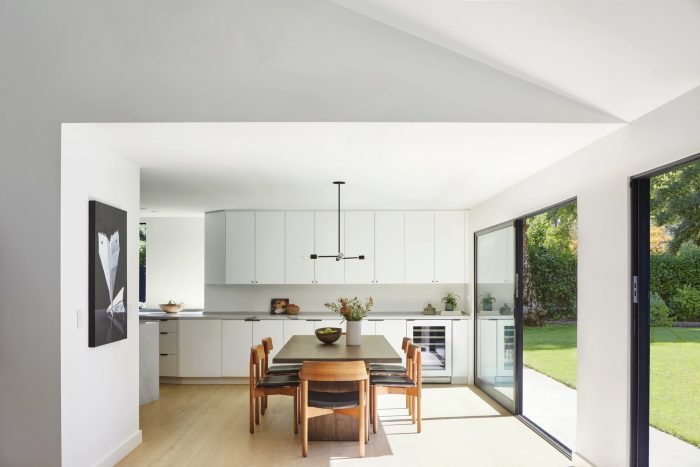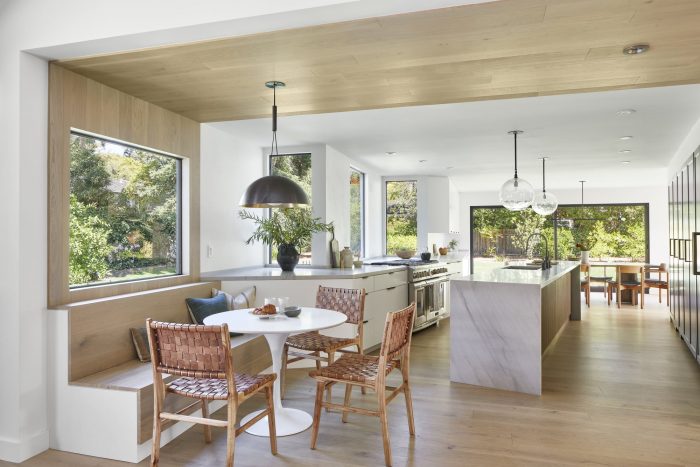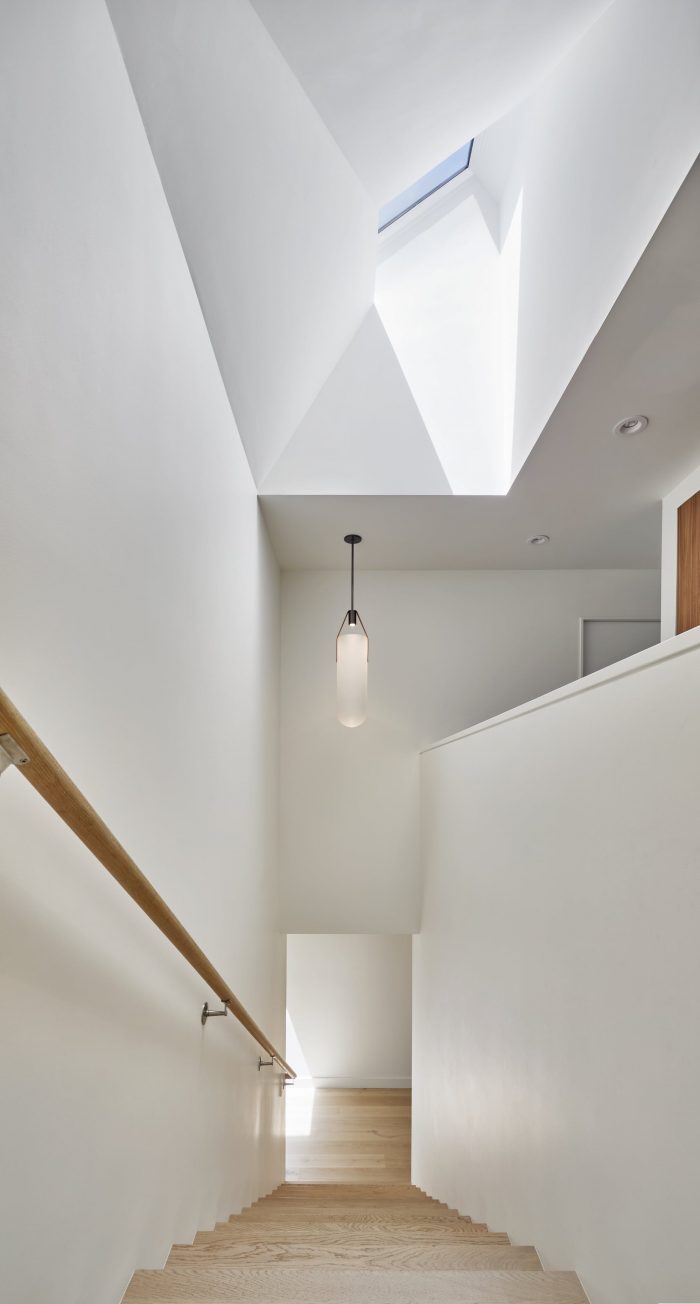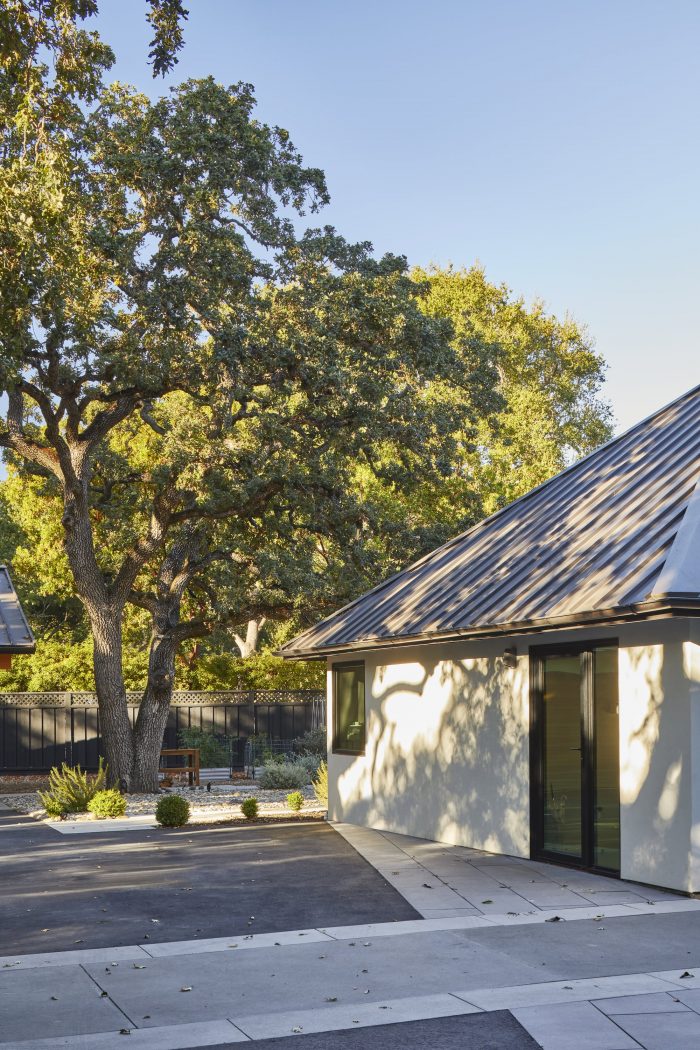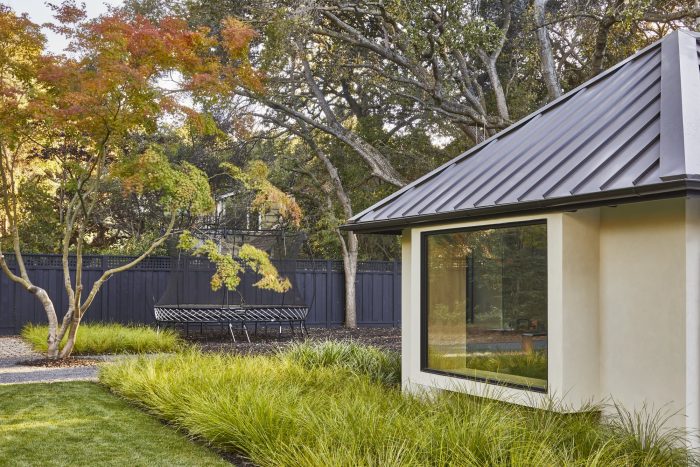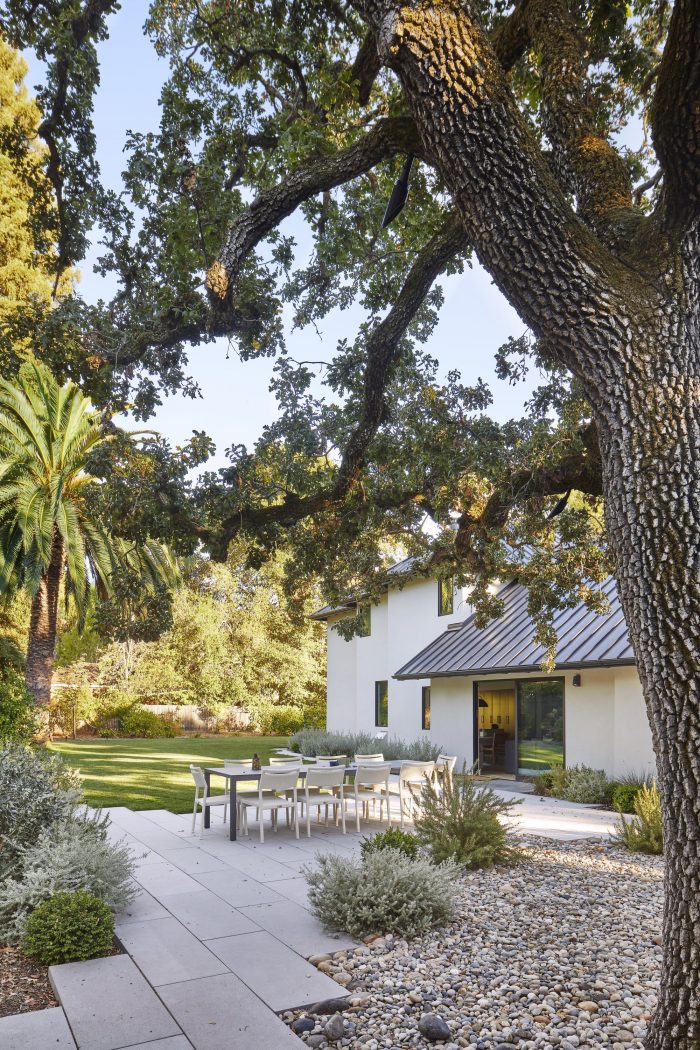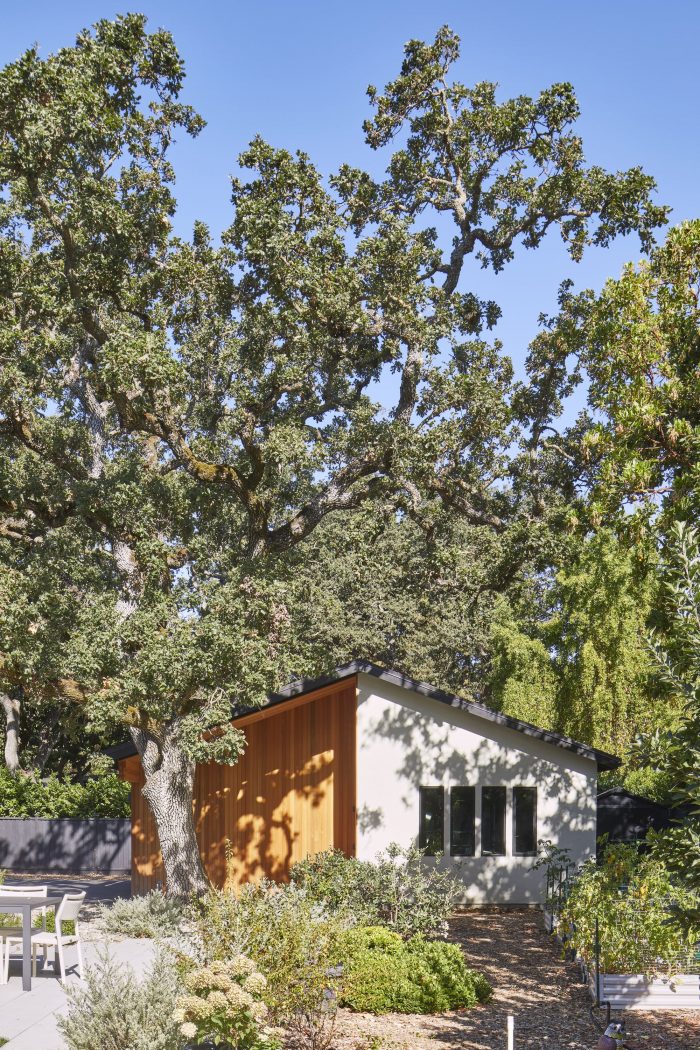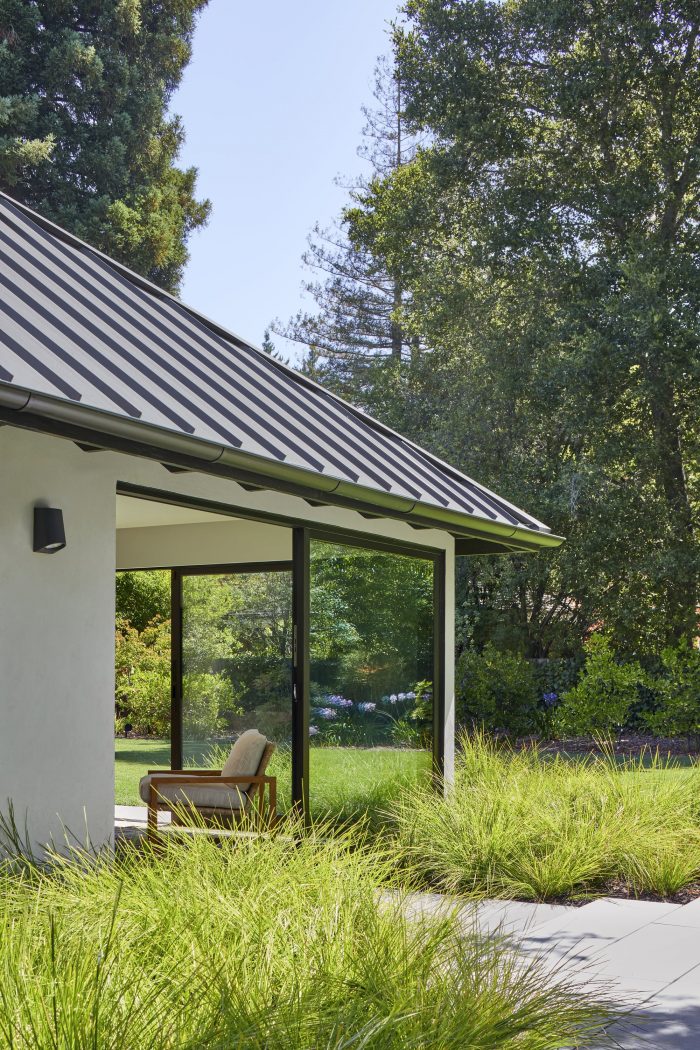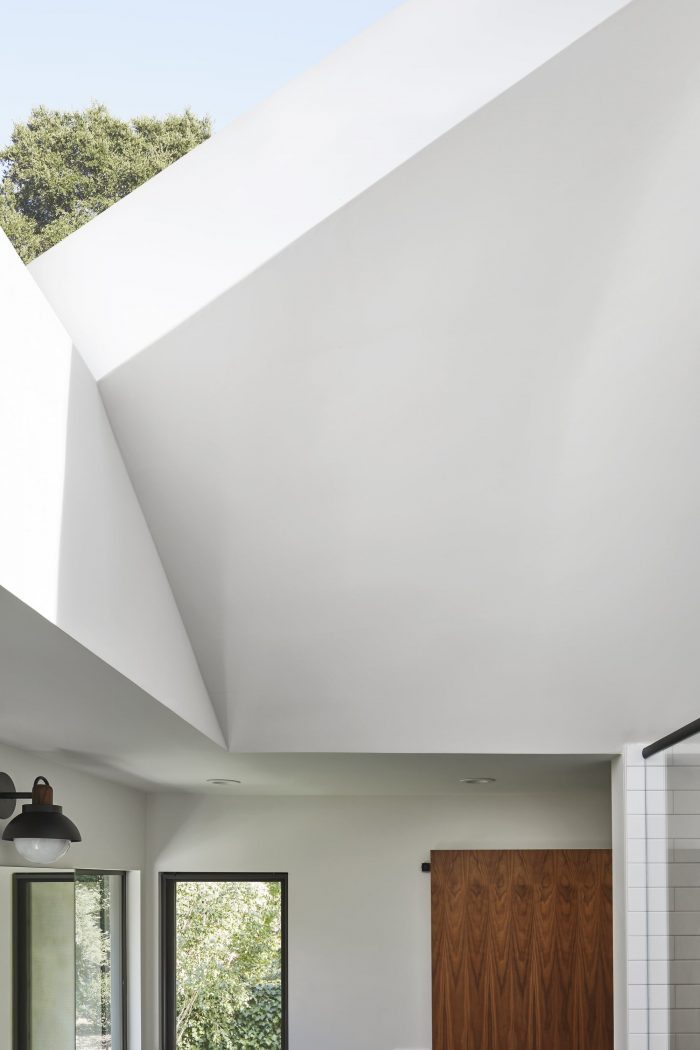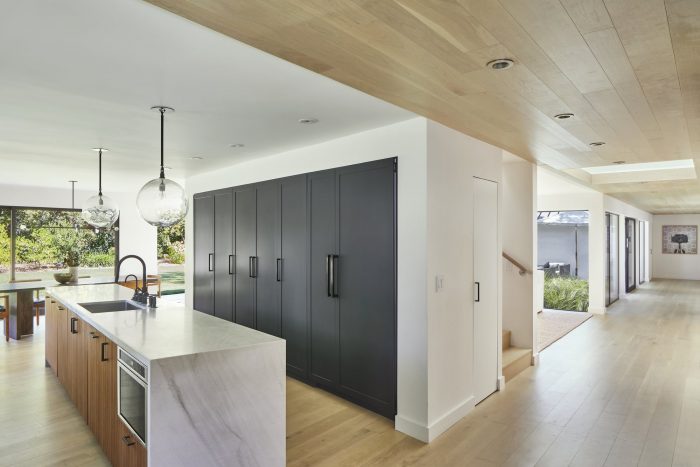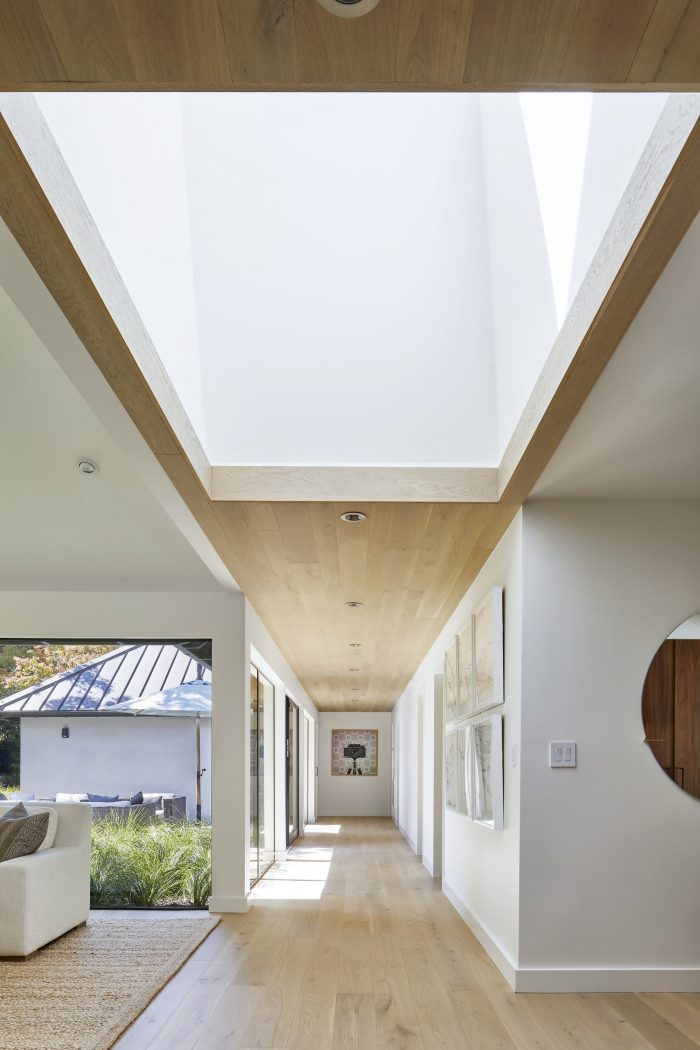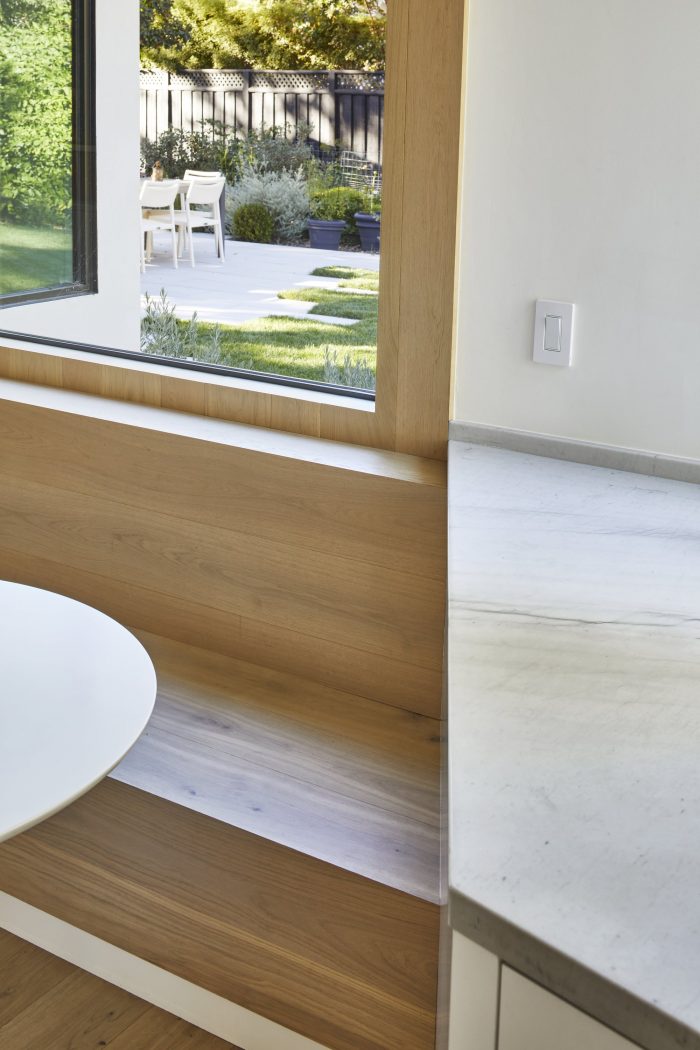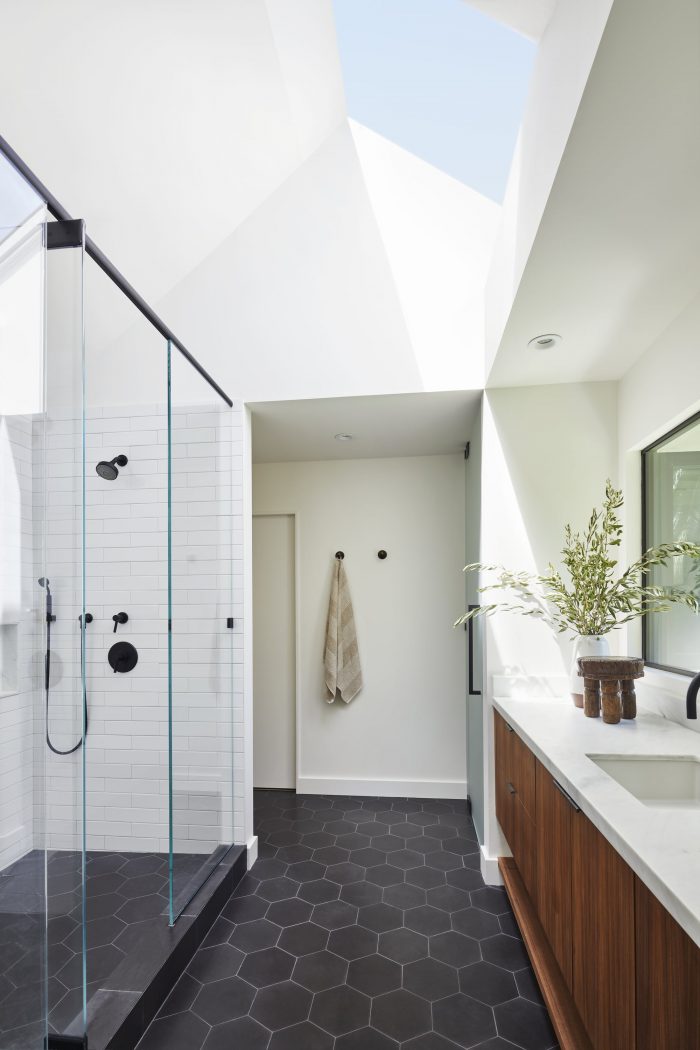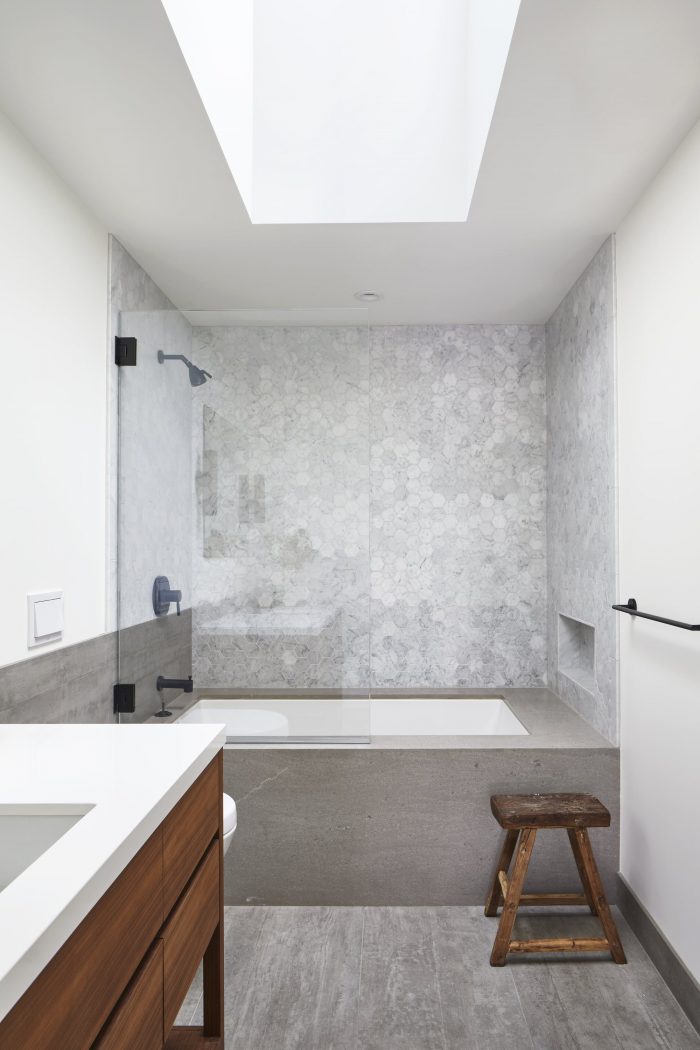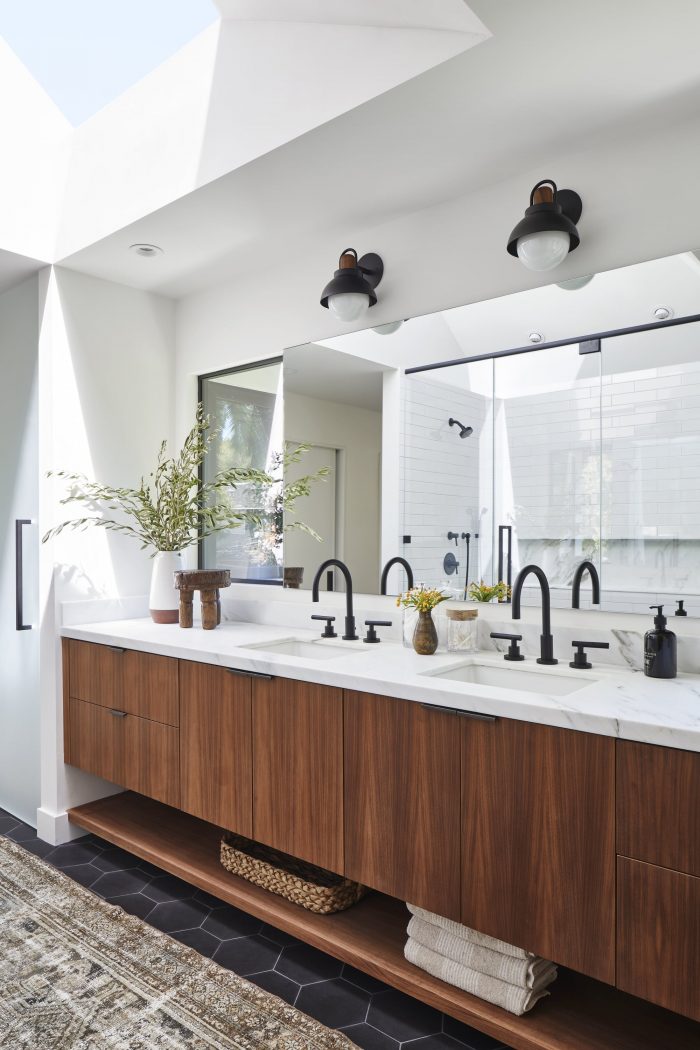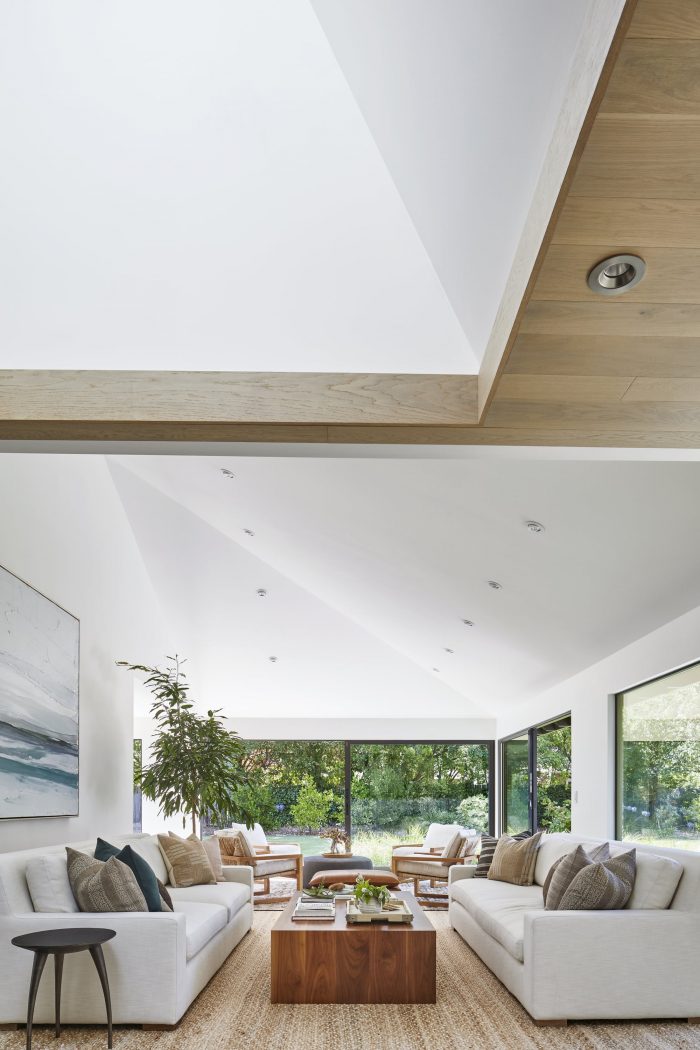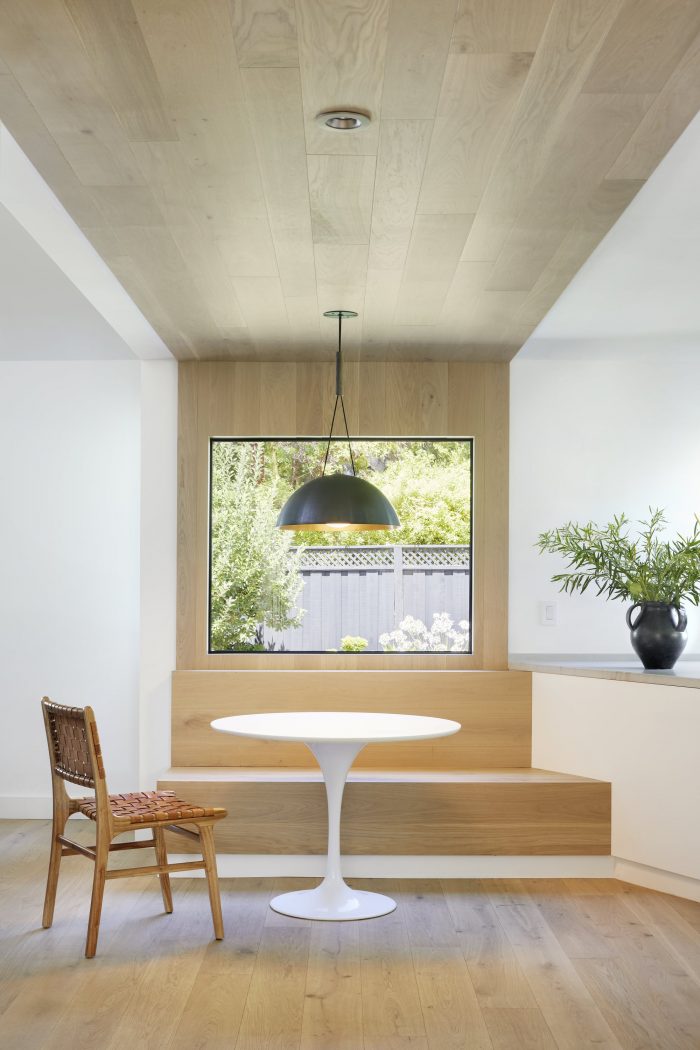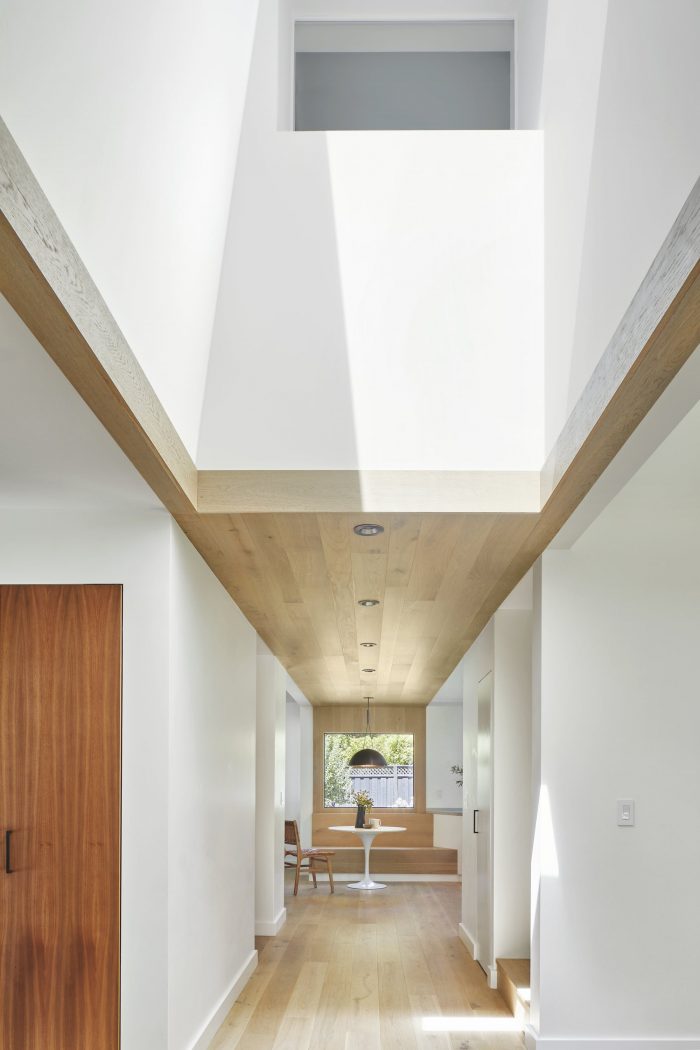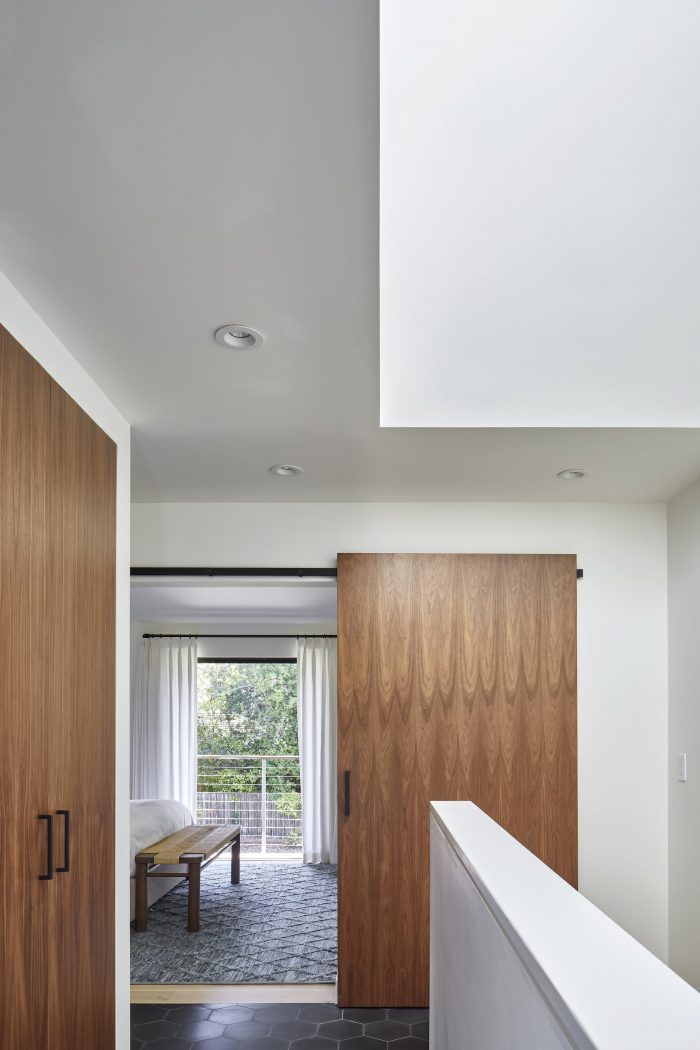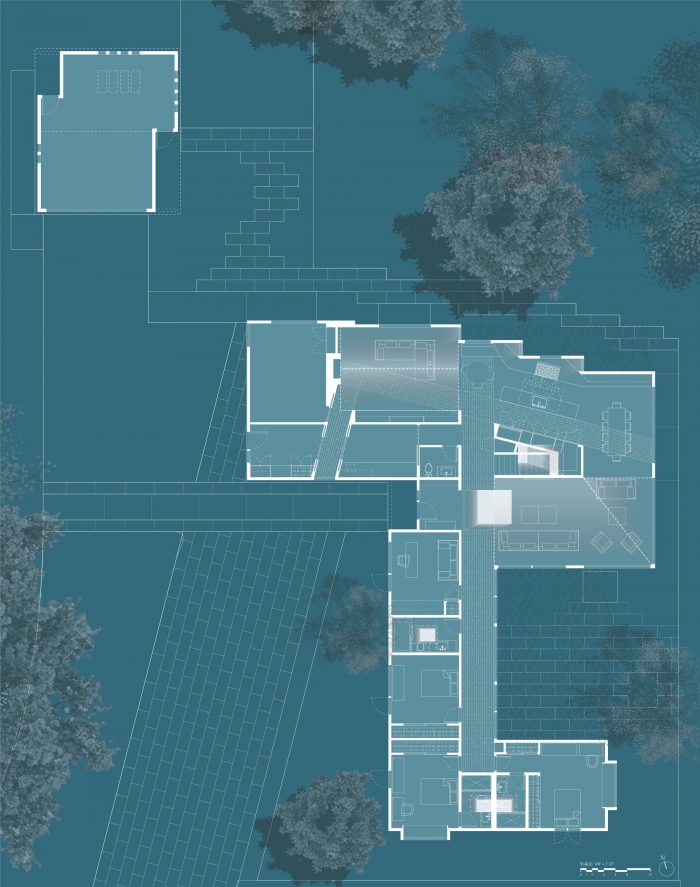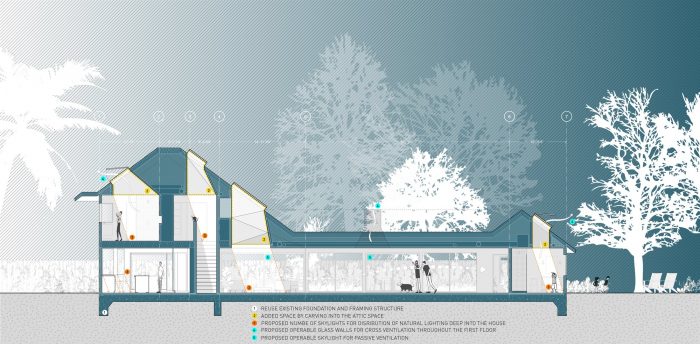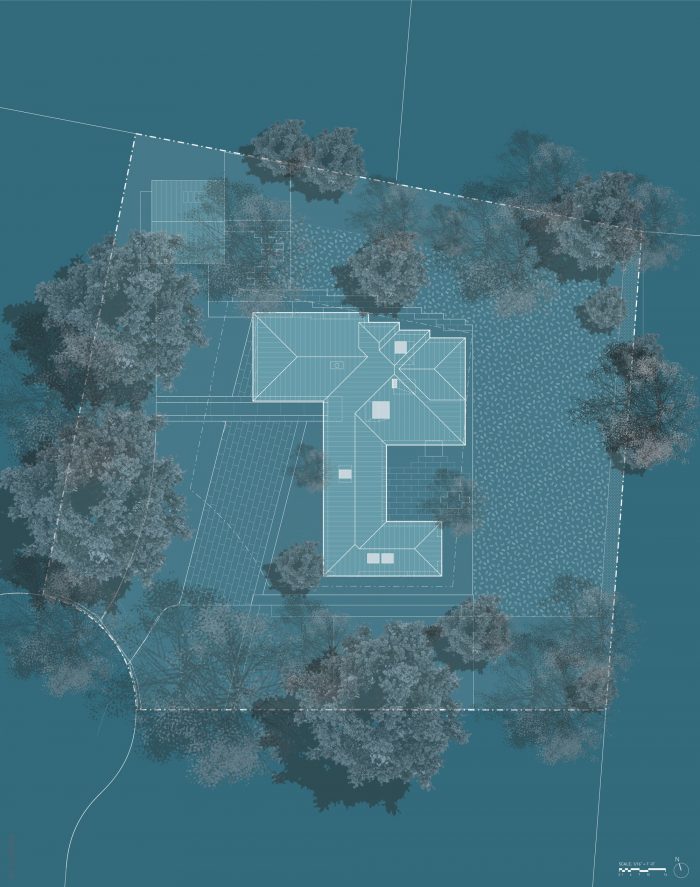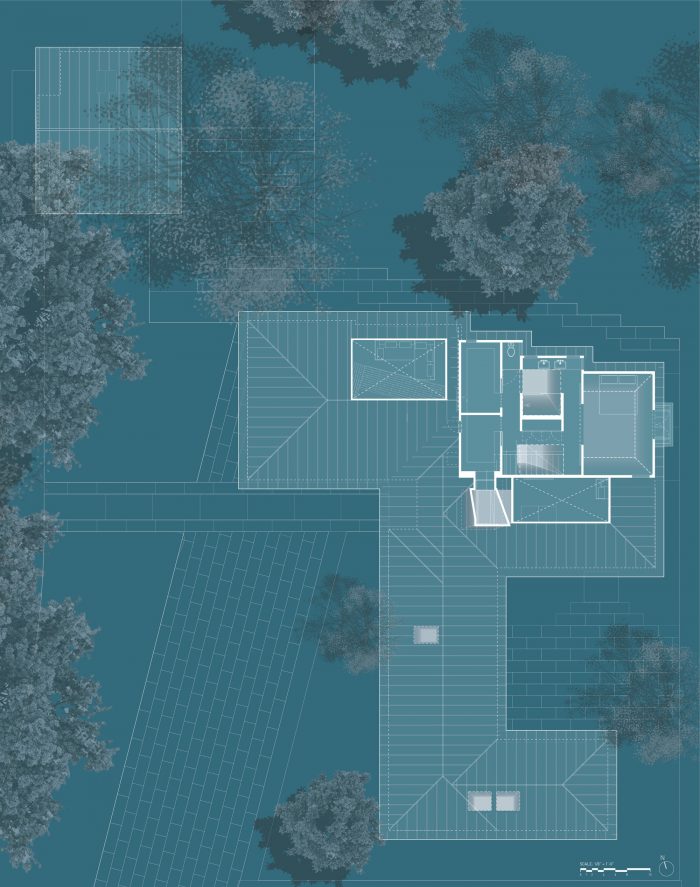在加州阿瑟顿成为硅谷的一个繁荣小镇之前,低矮的房屋围绕着景观形成。虚空之家开始时,SAW在一个安静的小巷尽头遇到了一栋房子,在橡树丛中安家,并围绕着一个院子组织起来–所有的安排都是合理的。然而,这里发生了一些奇怪的事情,一种顶天立地的感觉,这从一个似乎全是屋顶的外墙就可以看出来。从内部来看,这几乎都是阁楼–基本上无法进入,而且效率很低。
Before Atherton, CA was a Silicon Valley boom town, lower-slung houses patterned around the landscape. Void House began when SAW encountered a house at the end of a quiet cul-de-sac, settled amongst the oaks, and organized around a courtyard – all sensible arrangements. Yet there was something sort of odd happening here, a sort of top-heaviness, that was evidenced by a facade that was seemingly all roof. On the interior, it turns out this was almost all attic – largely inaccessible, and highly inefficient.
在加州阿瑟顿成为硅谷的一个繁荣小镇之前,低矮的房屋围绕着这个景观。虚空之家开始时,SAW在一个安静的小巷尽头遇到了一栋房子,在橡树丛中安家,并围绕着一个院子组织起来–所有的安排都是合理的。然而,这里发生了一些奇怪的事情,一种顶天立地的感觉,这从一个似乎全是屋顶的外墙就可以看出来。从内部来看,这几乎都是阁楼–基本上无法进入,而且效率很低。
Before Atherton, CA was a Silicon Valley boom town, lower-slung houses patterned around the landscape. Void House began when SAW encountered a house at the end of a quiet cul-de-sac, settled amongst the oaks, and organized around a courtyard – all sensible arrangements. Yet there was something sort of odd happening here, a sort of top-heaviness, that was evidenced by a facade that was seemingly all roof. On the interior, it turns out this was almost all attic – largely inaccessible, and highly inefficient.
SAW没有遵循传统的房地产智慧,拆掉老化的房子,用更大的房产来取代它,而是与客户合作,在现有结构的闲置空间中进行扩建,通过保留地基、结构和其他材料来保护资源,同时减少房子的整体占地面积。前面提到的空隙被战术性地雕刻,在建筑深处创造自然光源,减少对人工照明的需求,提供与景观的连接,并诱导空气流动,促进被动通风和热交换。
Rather than follow the conventional real estate wisdom to tear down the aging house and replace it with a larger estate, SAW worked with the clients to expand into the unused spaces of the existing structure, conserving resources by preserving the foundation, structure, and additional materials, while reducing the overall footprint of the house. The aforementioned voids are carved tactically to create sources of natural light deep into the building, reducing the need for artificial lighting, providing connections to views, and inducing airflow, promoting passive ventilation and heat exchange.
作为景观设计师和建筑师,SAW努力在建筑和景观之间建立共生关系。该公司减少了主要住宅的占地面积,并引进了耐旱的本地植物,与成熟的树丛一起生长。室内空间围绕着与景观的联系而组织,确保生态系统在日常生活中的组织和体验中的首要地位。
As both Landscape Architects and Architects, SAW strives to establish symbiosis between buildings and landscapes. The firm reduced the footprint of the primary residence and introduced drought-tolerant native plantings to grow alongside the mature tree groves. Interior spaces are organized around the connection to landscapes, ensuring the primacy of the ecosystem in the organization and experience of the house in daily life.
随着时间的推移,平衡会发生变化,植物会生长,结构会后退,随着时间的推移,扩大与地方和环境的联系。所有现有的树木和重要的植物都被保留下来,并以额外的植物作为补充。耐旱的景观设计创造了与户外的联系,使人们可以观赏、移动和玩耍。
Over time, the balance changes, the plants grow, and the structures recede, expanding connections to place and context over time. All existing trees and significant planting were preserved, and complemented with additional plantings. The drought-tolerant landscape design creates connections to the outdoors for views, movement, and play.
Architects: SAW // Spiegel Aihara Workshop
Photographs :Mikiko Kikuyama
City : Atherton
Country : United States

